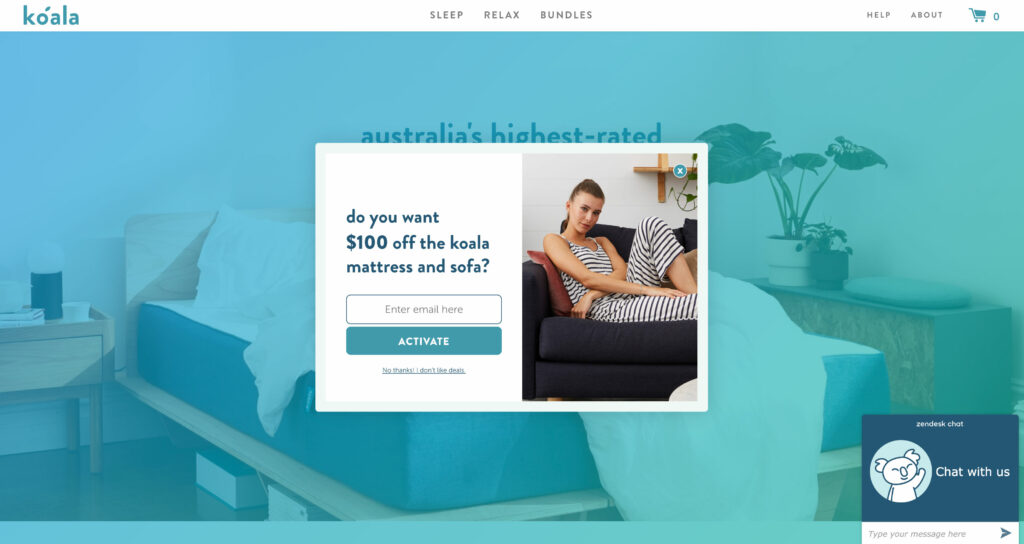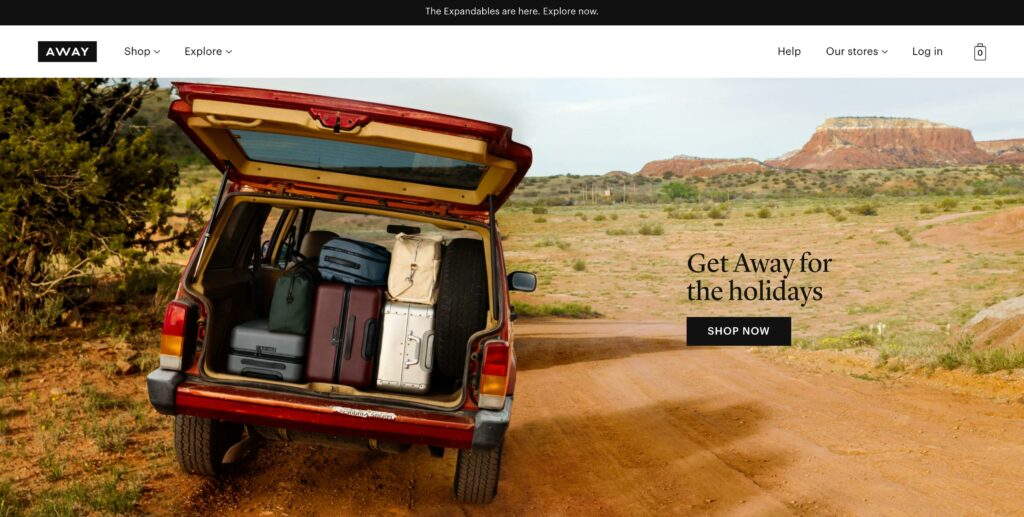Introduction
We’re calling it – the eCommerce industry has shifted. It’s something we’ve been seeing for a few years now, but we’re only just beginning to really take notice of the ways in which the internet and social media have really made their mark on eCommerce.
Bypassing the middleman – the Myers, DJs, bricks-and-mortars of yesteryear – and going directly to consumer is the new frontier of retail. Brands like Koala, Warby Parker and Clare may never have made it out of their infancy by going down the traditional path. But through embracing their status as digital natives (a little like yours truly), they’ve been able to connect directly with their audiences and amass cult followings that are based on – as Janine Wolf writes – “brand love, not brand loyalty.”
If you’ve got a great idea for a brand that lends itself to a meaningful experience or impact for your consumers, then great – you’ve got the first ingredient. But it takes a lot more than just the initial spark to get a direct-to-consumer brand up and running, or everyone would be doing it. Well, everyone is doing it – but for your brand to stand the test of time, you’ll need to do it well.
But we’re getting ahead of ourselves. Let’s break down exactly what this direct-to-consumer business is all about, and why it’s so important to today’s eCommerce landscape.
Understanding the direct-to-consumer buzz
Before we go any further, we’ll address that one person who’s surely reading this just bursting to say – ‘direct-to-consumer brands aren’t anything new!’ Alright – you’ve got us there. We’re not saying that this is a new idea to go the start-up route.
But the growing influence of social media and the internet have certainly made it a more accessible one. While you’d need to pony up around $5 million to get your business off the ground in the year 2000, today you can start with just $5K (or a well-timed appearance on Shark Tank).
It’s this idea that anyone can start a direct-to-consumer brand – along with its ties to digital – that has attracted a wealth of millennials to the space. Reflected in the often-youthful, always minimal branding that quietly defines the direct-to-consumer look, the millennial touch can be seen across all elements of these brands. Think the Britney-pink of beauty powerhouse Glossier, or the quick wit of mattress brand Koala’s advertising.
But it’s just as much about talking the talk as it is about looking the part. Direct-to-consumer brands aren’t just here to offer you a product or a service – they’re here to make your life better for it.
This is how Glossier explains its purpose:
It’s about fun and freedom and being OK with yourself today. We make intuitive, uncomplicated products designed to live with you.
That’s a hell of a lot more relatable than the old Maybe she’s born with it. Maybe that’s why 9 of the top 10 US beauty brands have posted a sales dip in 2019, while Glossier has climbed to a over a billion dollars.

The ups and downs of life as a digital brand
The best direct-to-consumer brands make it look easy. There’s something about the sleek branding, the way they just seem to get you, that has you counting your eCommerce millions already.
And there’s certainly something to be said for the appeal of going it on your own and giving your digital business idea a red hot crack.
But of course there’s always that one naysayer friend, the one who’s “just playing devil’s advocate,” who’s asking if you’ve lined up a couch to sleep on when it all goes belly-up. The one who’s full of reasons not to do it. Do they have a point?
Let’s settle this with a good old-fashioned pros and cons list.
Pros
1 – You can launch relatively quickly. Get your core business idea nailed down, get an initial order of product, and get it online within a matter of months.
2 – You can scale as quickly – or slowly – as you can handle. Things going well? Great! Add more products to your range, or expand your footprint. Waiting for more stock? Maintain a presence on your socials and build some hype for when you’re back in business.
3 – You’re in control of your expenses. No overheads, no-one taking their cut of your profits, lower shipment costs. Operate out of your garage if you want to, no-one’s judging.
4 – You’re also in control of your data. All that engagement on social media isn’t just good for the ego – it’s the iceberg of data that goes so much deeper than it looks. That’s an invaluable insight into who your target market is, what they like, what they don’t like… the list goes on. That information is marketing and eCommerce gold when it comes to the future of your business.
Cons
1 – The competition is fierce. A website and a social media profile doth not a brand make. You’ll need a solid brand identity and strategy in place before you ever write your first Insta caption to help you survive and thrive in today’s cutthroat eCommerce landscape.
2 – It’s digital or bust. Social media not your thing? Too bad, it’s your audience’s thing. Direct-to-consumer and social go hand-in-hand, so you’ll not only need a plan to manage these platforms – you’ll need a plan to harness them and turn them into breeding grounds for future brand loyalists lovers.
3 – You need a great experience to back up your great idea. It’s not enough to just have a great product anymore. Every element of your customer’s experience is being scrutinised, from the wording of your confirmation emails to the tissue paper in your packaging. And if it’s not #amazing, you’ll either be banished into the forgotten brands of yesterday, or worse, sentenced to a trial by social media in which you’ll feel the full ramifications of being mediocre.
How to kick direct-to-consumer goals
Alright, you’ve read this far. Or you’ve just skipped to the ‘how to’ part. Either way, you’re feeling good about your idea and you’re ready to get this show on the road. We like your style!
There are a few elements that will prevent your brand from becoming the Fyre Festival of eCommerce.
A great story
Remember what Maya Angelou said about people not remembering what you said or did, but that they’ll remember how you made them feel? That may be a huge paraphrase of the original quote, but it’s the sentiment that’s stuck. And a great brand needs this Maya Angelou-level stickiness to cut through all the noise.
Online glasses retailer Warby Parker absolutely nails this. Read this excerpt from their origin story and picture yourself in this scenario (hint – it’s easy).
We were students when one of us lost his glasses on a backpacking trip. The cost of replacing them was so high that he spent the first semester of grad school without them, squinting and complaining. (We don’t recommend this.) The rest of us had similar experiences, and we were amazed at how hard it was to find a pair of great frames that didn’t leave our wallets bare.
Now try to recall what you know about Australia’s biggest optical retailers. Yeah, we’ve got nothing either.
The perfect product
We’re not talking about what it is, specifically (though that needs to be great too). We’re talking about its size. Optimising your product size for shipping has flowover effects on everything from manufacturing to packaging and shipping costs, meaning less money spent on shipping expensive air and more money in the bank.
Setting yourself up for success
Some of our favourite – and the most successful – direct-to-consumer brands are built on the subscription model. Yes, they’ve got a great story and yes, they’ve got a kickass product. But where they make their millions is through taking care of the mundane, offering a set-and-forget approach to reordering and repurchasing that injects joy back into stocking up on your essentials. That’s the essence of Dollar Shave Club, which took on men’s grooming powerhouse Gillette with three employees and eventually grew to be bought by Unilever for a cool $1 billion in 2016.
An audience ripe for the picking
Look, your mum’s not going to break the news to you so we’ll do it. Your brilliant start-up selling handmade threads for the over 65s? Yeah, it’s not gonna work. Direct-to-consumer brands are built through social media. And the consumer part of direct-to-consumer is pretty important – so if your target market’s not on social, you’re going to make things pretty difficult for yourself.
Lean into social media. Lean into influencer marketing. By building an authentic and engaged following on your social channels through a killer strategy, you’ll save yourself thousands in paying to reach those same people – who probably won’t want to hear your message anyway. OK, boomer.

Our top 5 D2C brands to watch here & abroad
Here are a few of our favourite relatively new D2C brands other than the ones we have already mentioned.
1 – Away
2 – Pilot Health
3 – Equal Parts
4 – Blue Land
5 – Henry Rose
Want to hit the ground running?
We’ve already given you a road map to put you well on your way to success in launching your own direct-to-consumer brand. But we get it – it’s easier said than done, particularly when you’re already wearing about seventy other different hats as a business owner.
Never fear – that’s where we come in. The Natives are, you guessed it, natives in the digital space and we’re here to take the guesswork out of launching, testing and scaling your direct-to-consumer business.
This is our bread and butter, our jam, our wine and cheese board. While we can help across all stages of the process, here are a few of our specialities to get the ball rolling:
Branding and storytelling
We’ve banged on about it throughout this entire blog, but we can’t stress enough how important it is for the success of your brand to nail the story behind it. And when we say story, we don’t just mean the paragraph you’ll whack on the ‘About Us’ section of your website – your story impacts everything from your Instagram captions to your product names.
We’ll not only help you create a brand and story around where you’re at now; we’ll also give you room to evolve and grow with your business as it gains momentum.
Choosing the right eCommerce platform
Ever tried to buy something and given up? Maybe it was too hard to find what you were looking for, or it was too much effort to check out? Yeah, customers are fickle like that. If you take a gamble on a platform that’s not the right fit, your brand will get less time of day than last year’s Bachelor contestants. Not ideal.
We’ll work with you to pick the right platform for your needs – whether that’s going for a simple subscription-capable site hosted through Woocommerce or Shopify, through to something more enterprise like Neto. Hell, we’ll even design and develop a platform-specific to your business if that’s what’s needed.
Think big, start small
Don’t have the budget to invest in a full website or brand package before you’ve tested it in the market? Most people don’t. So we can start small and launch with a leaner site or a selection of brand assets, letting you see the viability of your concept first hand while picking up learnings along the way.
Test, learn, optimise, repeat. Make changes on the fly, do more of what’s working, and less of what isn’t. Scale things up at your own pace. When you work with The Natives, we’re a part of your team and we’ll be with you every step of the way.
